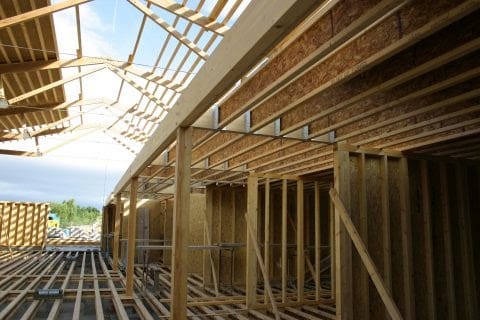5 Reasons to Use Engineered Timber in Construction

Are you torn between using engineered timber over its alternatives for your project? Generally speaking, no one construct is better than another as they each have their own pros and cons and it also depends on the requirement of your current project.
Here we’ll take you through just a few reasons why engineered timber should be high on your list of materials to use in your next project.
Speed of installation
Many builders will agree that installing timber is quicker in comparison to the traditional method of brick and block building. Engineered timber products can be safely secured and fitted in a matter of days rather than weeks. Using this material in a build is not reliant on the weather, unlike other building materials. Furthermore, off-site manufacturing helps speed up installation on-site as products are manufactured in a controlled environment.
Stronger Material
Engineered timber is known for being a strong and durable material. Well-built roof trusses and floor joists will survive for hundreds of years after installation which helps to reassure the owner that they are buying a high-quality product.
Cost
Cost always plays an important role when planning a build. The cost of material and construction time need to be considered. Prices of engineered timber can vary depending on the product, whether that’s a roof and attic trusses or floor joists.
With factory costs being more predictable than on-site building costs, prices tend to fluctuate less. Labour costs may also vary as a typical builder will charge after the work is completed in comparison to being an upfront cost to cover the off-site investment.
Noise and Sound Insulation
Engineered timber can be designed to be more soundproof than other materials if you place something in between you and the source of the noise as this creates a buffer thus reducing the noise. The same method can be applied to floor joists. Simply place a sound-absorbent quilt, such as mineral wood in between the joists and this will soak up any sound.
Engineered timber also offers a higher insulation rating than its competitors due to its natural cellular structure. This allows homes to require less energy to maintain heating and cooling meaning fewer emissions in the environment.
It’s Environmentally Friendly
When ecological concerns are high and everyone is worried about the state of our environment, there has been a growing trend to move away from wood as a building material in order to prevent deforestation and manage greenhouse gases. But in fact, wood has several advantages that can help both builders and the environment.
Unlike other materials such as concrete or metals, wood is a material which is grown and regrown through natural processes and, here at Pasquill, we only use responsibly sourced products. Engineered timber is the most environmentally friendly, greenest material to build with. Waste that may be generated is recycled and growing trees take carbon out of the atmosphere, meaning that engineered timber is carbon negative.
Finally wood, in general, is biodegradable. When exposed to natural elements and climate conditions, wood will break down much more quickly and actually replenish the soil in the process. When optimised, the lifespan of any timber can easily outlive the tree which it was originally made.
So there you have it, our top reasons for why you should be using engineered timber within your construction. Pasquill offers a wide range of roof trusses and floor joists made from engineered timber. Get in touch with one of our team today to find out more.




